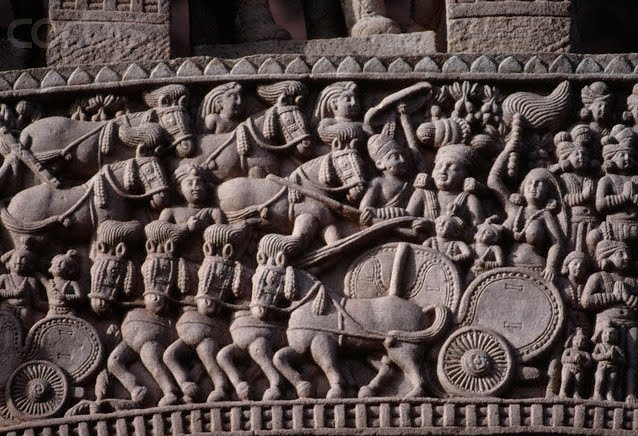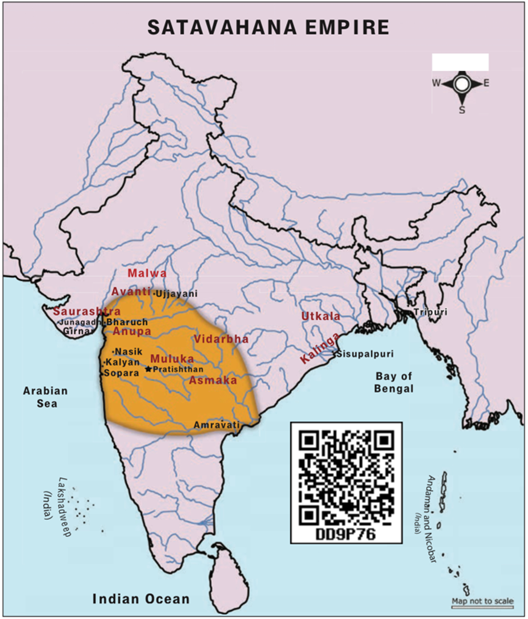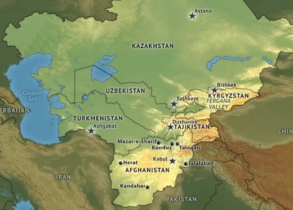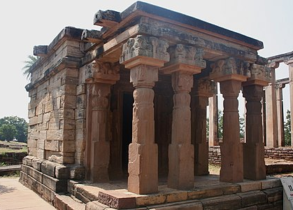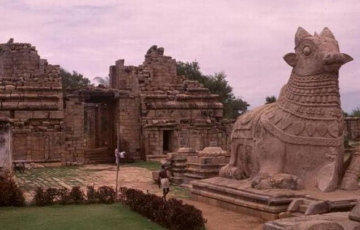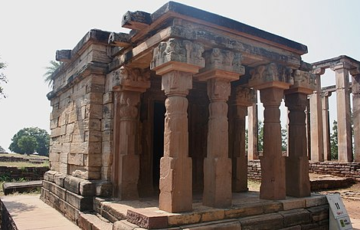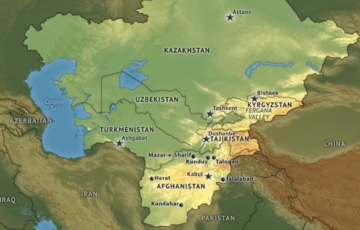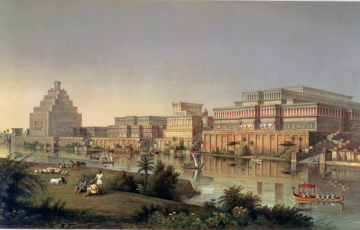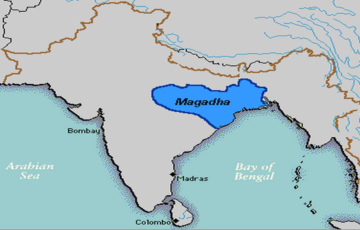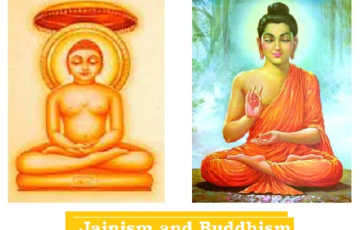THE SATAVAHANAS
Introduction
The Satavahanas emerged in the 1st century BC in the Deccan region, succeeding the Mauryans as native rulers in Deccan and Central India.
- Believed to be identical to the Andhras mentioned in the Puranas, the Satavahana kings are referred to as “Andhrabhrityah,” likely denoting an Andhra tribe.
- Their dominion extended over regions of Andhra, Maharashtra, Karnataka, and Madhya Pradesh.
- The Satavahanas initially ruled in the Telangana area, establishing their capital in Prathistan (Paithan in Maharashtra).
- They later moved eastwards to control coastal Andhra.
- The earliest Satavahana inscriptions date back to the 1st century BC when they defeated the Kanvas and established dominance in parts of central India, particularly north Maharashtra and the upper Godavari valley.
South India under the Satavahanas
Satavahanas rose in 1st century BCE, ruled Andhra, Maharashtra, Karnataka, Madhya Pradesh. They began ruling in Telangana, later capitalizing Prathistan (Paithan, Maharashtra). The work of Pliny mentions Andhra’s walled towns, forces.
Important Rulers
| Gautamiputra Satakarni | ● He conquered Shaka ruler Nahapana, reissued Nahapana’s coins with his insignia.
● His mother Gautami Balashri’s Nashik inscription calls him conqueror of Shakas, Pahlavas, Yavanas. ● He performed the prestigious Vedic asvamedha sacrifice. |
| Vasishthiputra Pulumavi | ● Successor of Gautamiputra Satakarni expanded Satavahana Empire’s frontiers.
● His coins are scattered across South India. ● Yagnashri Satakarni, another ruler, had ship motif coins, highlighting overseas trade’s significance. |
| King Hala | Wrote Gatha Sattasai, a collection of 700 love poems, Written in Maharashtri Prakrit dialect |
The Satavahana Empire declined around the 3rd-century CE and was replaced by Ikshvakus, Pallavas in Andhra, Kadambas in Karnataka.
Importance of Satavahana Period
- The Satavahana era introduced land grants, mainly for Buddhists and Brahmins.
- Naneghat inscription mentioned tax exemptions for Buddhist monks’ granted lands. With this priestly groups gained higher status due to land grants.
- Landowners who didn’t cultivate led to social hierarchy and divisions.
- The era established a significant Deccan state.
- Buddhist Rock-cut caves along trade routes connected the interior to the Konkan coast.
- Indo-Roman trade prospered during this period.
Culture of the Satavahanas
Metallurgy
- They utilized iron tools and extracted iron ores from Karimnagar and Warangal in Telangana.
- Gold was used as bullion since they did not issue gold coins.
- Lead, Potin, Copper, and Bronze were primarily used for coinage.
- Potin is a base metal alloy commonly used in coinage, typically consisting of copper, tin, and lead in varying proportions. It does not usually contain significant amounts of precious metals like gold or silver.
- Evidence of ancient gold workings is discovered in the Kolar fields.
- Lead, Potin, Copper, and Bronze were primarily used for coinage.
Agriculture and Economy
- Paddy transplantation and Cotton production thrived in the region between the Krishna and the Godavari rivers.
- Increased trade activity was evidenced by the discovery of Roman and Satvahana coins in the area.
- This economic boom attracted many merchants and artisans, who actively supported the Buddhist cause through generous donations and the establishment of memorial tablets.
- The term “Gandhikas,” initially referring to perfumers, later encompassed all types of shopkeepers.
- Towns began to flourish in Maharashtra by the first century BC, followed by further development in the eastern Deccan.
- Pliny, an Italian historian, noted that Andhra boasted 30 walled towns and numerous villages.
Social Organization
- The Satavahanas, originally a Deccan tribe, underwent Brahmanization, as seen in Gautamiputra Satakarni’s claim to Brahmin status and his assertion of re-establishing the four-fold varna system.
- Matrilineal aspects were evident in the naming conventions of kings, often derived from their mothers, such as Gautamiputra and
- Some inscriptions bore the authority of both the king and his mother, showcasing the importance of maternal lineage.
- Despite these matrilineal elements, the Satavahana ruling family followed a patriarchal succession to the throne.
Administration
The Satavahanas adhered to the ideals of Dharmashastras, presenting the king as the guardian of dharma with divine attributes.
- Administrative structures retained from the Ashokan era included officials known as Amatyas and Mahamatras, with higher-ranking officials titled
- New administrative divisions called Rashtra were introduced, while districts were referred to as Ahara.
- Feudatories in the kingdom were categorized into three grades:
- Raja, who had the authority to mint coins,
- Mahabhoja, and Senapati, with the latter often serving as provincial governors to manage tribal areas.
- Rural administration was overseen by Gaulmika, who headed military regiments, while Kataka and Skandhavara served as administrative centers and military camps, reflecting the military nature of Satavahana rule.
- The Satavahanas initiated the practice of granting tax-free lands to Brahmanas and Buddhist monks, elevating the status of priestly groups.
- Inscriptions at Naneghat in Maharashtra document tax exemptions on lands granted to Buddhist monks.
- Land grants contributed to the emergence of a non-agrarian landowning class, leading to social hierarchies and divisions.
- Brahmins played a significant role in maintaining the varna system, contributing to social stability.
- Pliny noted the Andhra kingdom’s formidable army comprising infantry, cavalry, and elephants.
Religion
- The Satavahanas practiced Vedic rituals such as “Ashvamedha” and “Vajapeya,” and venerated Vaishnava deities like Krishna and Vasudeva.
- Buddhism experienced significant promotion under their rule:
- Mahayana Buddhism gained traction, especially among the artisan class.
- Nagarjunakonda and Amaravati emerged as prominent Buddhist centers in Andhra Pradesh during the Satavahana era and continued under their successors, the Ikshvakus.
- Buddhism also thrived in western Deccan regions like Nasik and Junar in Maharashtra, possibly supported by traders.
Art and Architecture
- The construction of the Amaravati Stupa began circa 200 BC, with full reconstruction occurring in the latter part of the second century AD.
- Nagarjunakonda flourished during the second and third centuries AD under the patronage of the Ikshvakus, who succeeded the Satavahanas.
- This site featured Buddhist monuments alongside early Brahmanical brick temples.
- The Satavahanas played a significant role in enhancing the Buddhist stupa at Sanchi.
- King Satakarni II supervised its repair, contributing greatly to its embellishment.
Language
- Prakrit served as the official language of the Satavahanas, with all their inscriptions composed in Prakrit and written in the Brahmi script.
- The Gathasaptasati, a collection of 700 love poems written in Maharshtri Prakrit, shared thematic similarities with Tamil Sangam poetry.
- It is credited to a Satavahana king named Hala.
Decline of Empire
- The Satavahana Empire saw its decline by the 3rd century AD.
- Succession was assumed by the Ikshvakus, who followed the Satavahanas.
- Subsequently, the Pallavas took control in Andhra, while the Kadambas rose to power in northern Karnataka.
IKSHAVAKU (225-350 AD)
- The Ikshvaku dynasty emerged following the decline of the Satavahanas, particularly in the eastern part of the peninsula, notably in the Krishna-Guntur region.
- Nagarjunakonda served as the capital of the Ikshvaku dynasty, indicating its significance as a center of power and administration.
- The Ikshvakus likely originated as a local tribe, adopting the name Ikshvaku to assert the antiquity and prestige of their lineage.
UPSC PREVIOUS YEAR QUESTIONS
1. Which one of the following statements about coins struck during 200 BCE to 300 CE in the Indian subcontinent is not correct? [UPSC CAPF 2022]
1. The Indo-Greeks introduced bilingual and bi-script legends on their coins.
2. The Kushanas minted large quantities of gold coins as well as copper coins of low denomination.
3. The Satavahanas issued coins of silver, copper, lead and potin.
4. Absence of Negama coins suggests the declining power and authority of merchant guilds.
2. Which of the following statements is/are correct? (UPSC CAPF 2020)
1) The Satavahanas ruled over parts of Western India and Deccan
2) The Satavahanas repaired and rebuilt the Sudarshana Lake
Select the correct answer using the codes given below
a) 1 only
b) 2 only
c) Both 1 and 2
d) Neither 1 nor 2
3. Consider the following pairs: [ HPSC – 2023 ]
1) Pratihar King Bhoj : Gwalior Inscription
2) Satavahana King Pulumavi : Nasik Inscription
3) Hun King Toraman : Eran Varaha Inscription
4. How many of the above pairs are correctly matched?
1. Only one pair
2. Only two pair
3. All three pairs
4. None of the pairs
| IMPORTANT FACTS RELATED TO THE CHAPTER
● The Nashik inscription of Gautami Balashri refers to her son Gautamiputra Shatakarni as “Ekabrahmana,” which some interpret as “unrivalled Brahmana,” suggesting a Brahmin origin. ● The rulers of the Ikshvaku dynasty, also known as “Shriparvatiya” in Puranas, were initially under the patronage of the Satavahanas. However, they declared independence after the decline of the Satavahanas. ● Shrisantmula founded the Ikshvaku dynasty. ● The famous architecture of Amravati is believed to have been built during either the Shunga period or the Satavahana period. ● Ashoka’s rock edicts mention the Sangam Kingdom comprising Chola, Pandya, Satiyaputta, and Kerelaputta, along with Tamraparni (Sri Lanka), but do not mention the Satavahana kingdom. ● Satavahana rulers favored Prakrit over Sanskrit and encouraged the public aspect of arts, particularly associated with Buddhism. ● The earliest epigraphic record of land grants based on religion in India is found in Satavahana inscriptions, unlike the Mauryan emperors who did not grant land on a religious basis. ● According to Puranas, the Satavahana dynasty was established by Sindhuk, Simuka, or Shiprak after the assassination of Kanva king Susharma. ● Satavahana coins were unique, with punch-marked coins and those made of lead, copper, bronze, and silver, but not gold. ● Sanskrit, along with Prakrit and other folk languages, flourished during the Satavahana period, with the kings promoting their use in literary works. ● The Puranas mention 30 Satavahana rulers, with 29 listed in the Matsya Purana. |

